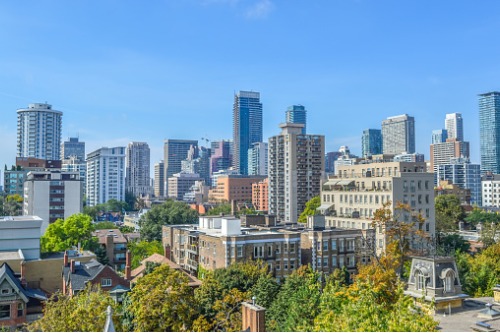Increasing density is more than creating more buildings; it’s about creating more places where people want to live in already established areas

Increasing supply has been an important part of housing discussions as of late, and while expansive and elaborate high-rise condominiums are certainly an attractive option, especially for urban centres, there are other ways to increase density on a smaller scale.
Detached and semi-detached home prices in the Summerhill neighbourhood in Toronto have risen by more than 35% in the last five years, but that hasn’t slowed down real estate sales in the area. According to a mid-year report from Sotheby’s, the city’s top-tier real estate market outperformed surrounding areas in the first half of 2019.
High-end developer North Drive Investments, Inc. took advantage of that data, as well as other research showing that the area is currently experiencing a high demand but low supply for large products. They created 36 Birch, a condominium townhouse development that will feature 27 two-storey residences, averaging more than 2,500 square feet.
Jordan Morassutti is a partner with North Drive and said that this is a unique building typology that should be embraced throughout the city.
“This is a hybrid building in that it’s part four-storey condominium and part townhome,” Morassutti said. “The building is a form of ‘gentle intensification’ that we were able to successfully get approved in the yellow belt, but planning staff as well as our design team acknowledge that it was a compatible use with the surrounding building typologies.”
The development is a collection of two-level units within a four-story building with elevators that access a level of underground, a common corridor on the first level as well as another common corridor on the third floor that separates the Sky Residences and the Garden Suites.
Summerhill was attractive for this type of hybrid building because the area itself is a bit of a hybrid location: it’s cosmopolitan with a lot of attractive retail offerings, yet well established with residential tree-lined streets. In many of these existing well-established areas, there may be fewer newer residential buildings, which means the interiors of the older existing housing is likely to be dated. Increasing density by providing multi-level living with the same amount of square footage as a single-family home is an attractive option.
Winning over the neighbourhood
While the area had a lot of development potential, there is always a community engagement process that may or may not be supportive. North Drive met with local residents before submitting their application, and, Morassutti said, the approval process happened fast compared to other developments within the GTA.
“It happened quite quickly, although we did go through an election cycle where the city took a break from typical council sessions, which pushed our approvals out longer than they typically would have. I think in a conventional, municipal year, this project would’ve probably, we had about six months of preapplication meetings, and then if I was to eliminate the time of the election cycle, my expectation is that we would’ve been approved within a year,” Morassutti said.
He adds that at first the idea of a four-storey property was quite daunting to the area, but ultimately, there was no official local opposition of the project, and that was largely a function of the work that was done in the early part of the process.
“They understood that this is an atypical site in that it’s almost ¾ of an acre, was previously occupied by an institutional use, and it was ripe for intensification. Once they understood that if it wasn’t us, it would be somebody else and that we were looking to elevate the neighbourhood, we won them over.”
As developers look for new creative ways to increase density in Canada’s largest cities, we’ll undoubtedly see more of these developments breaking the mold.



